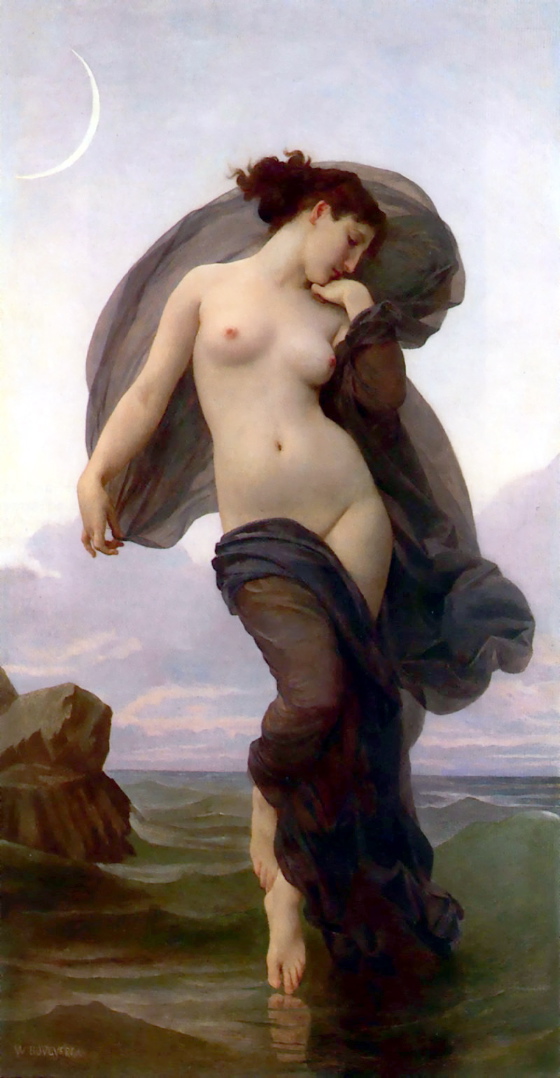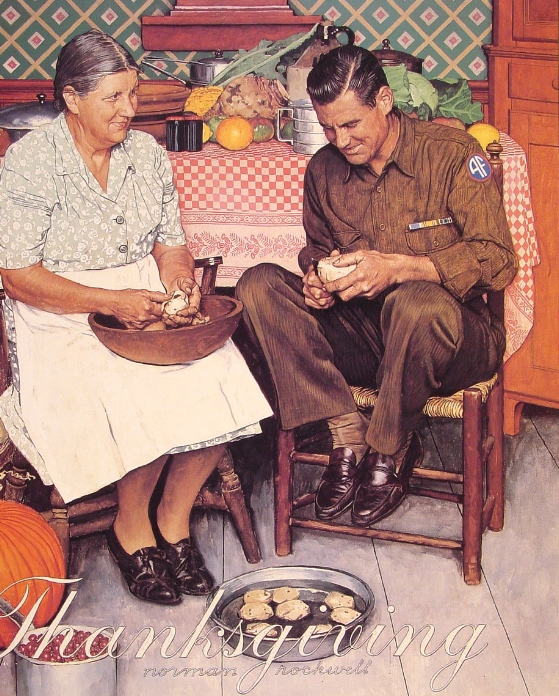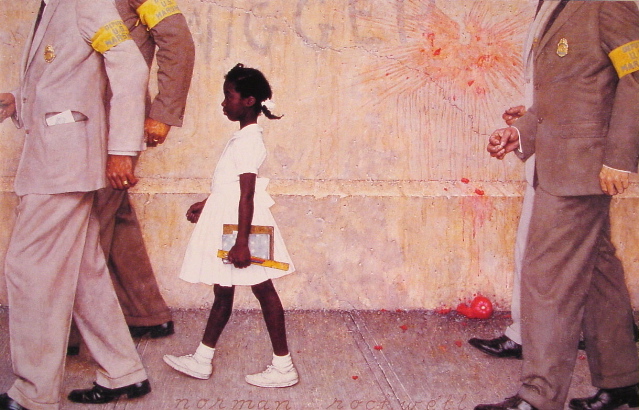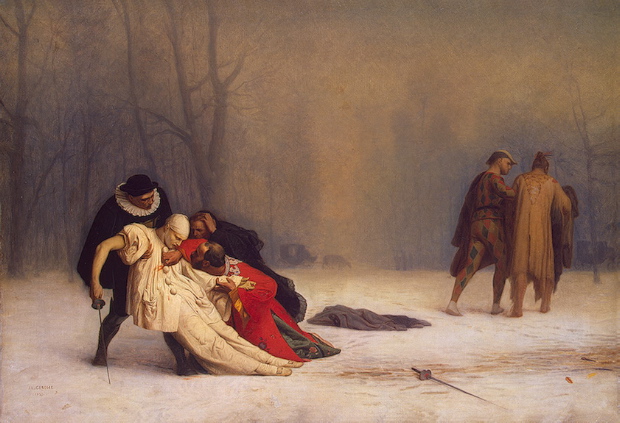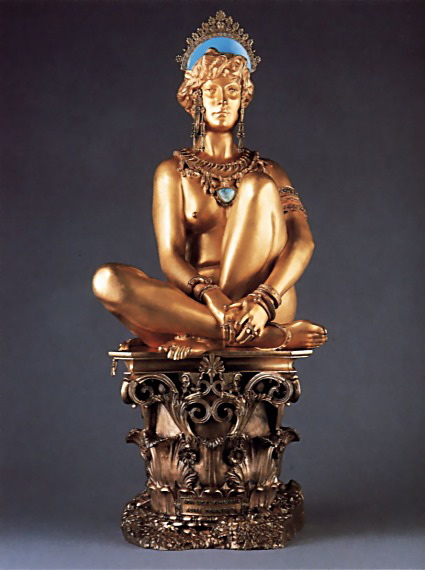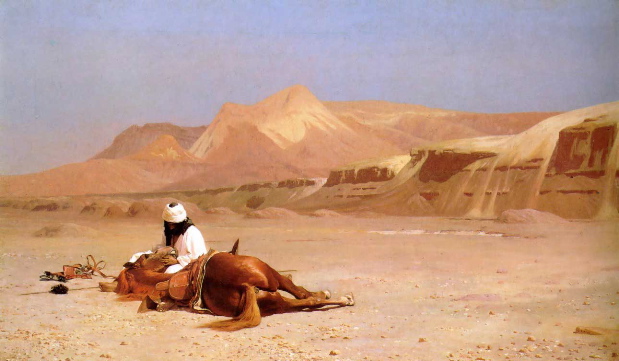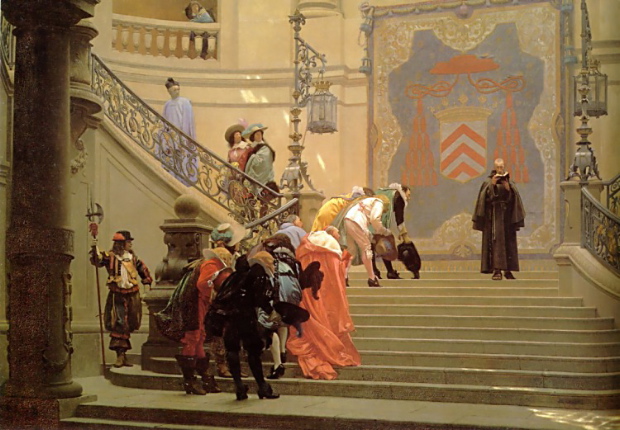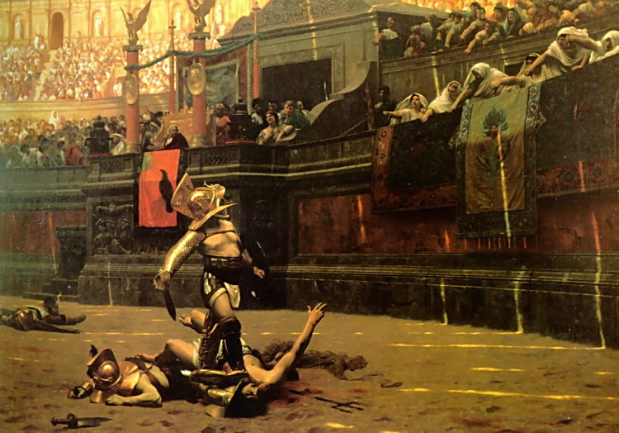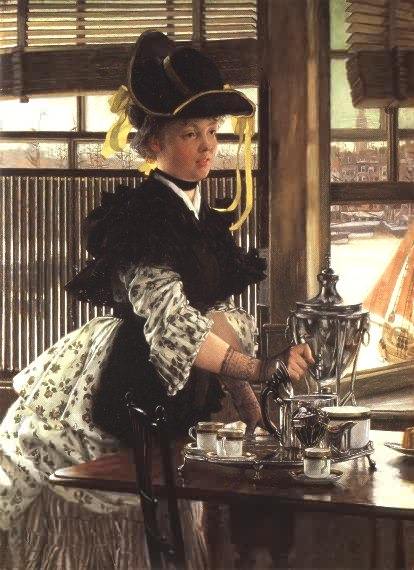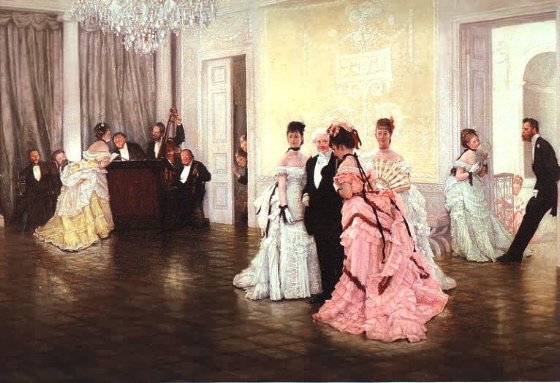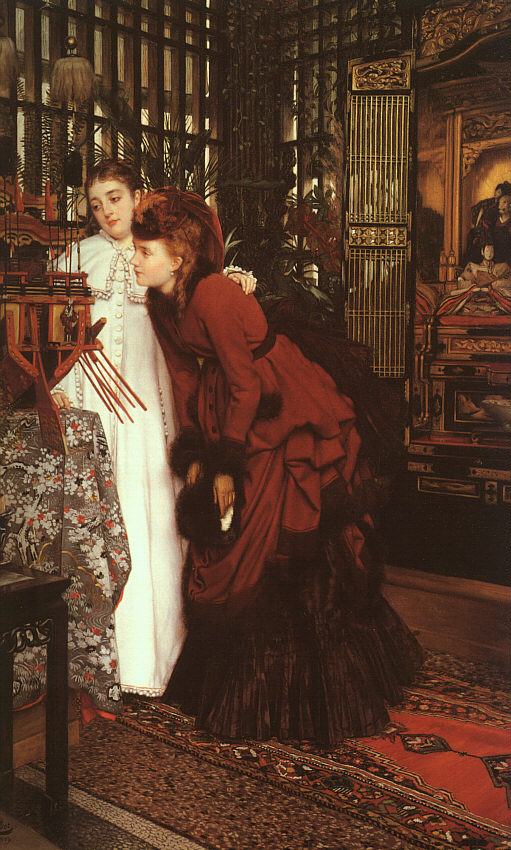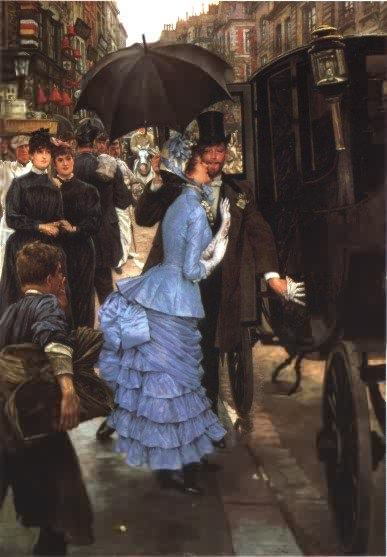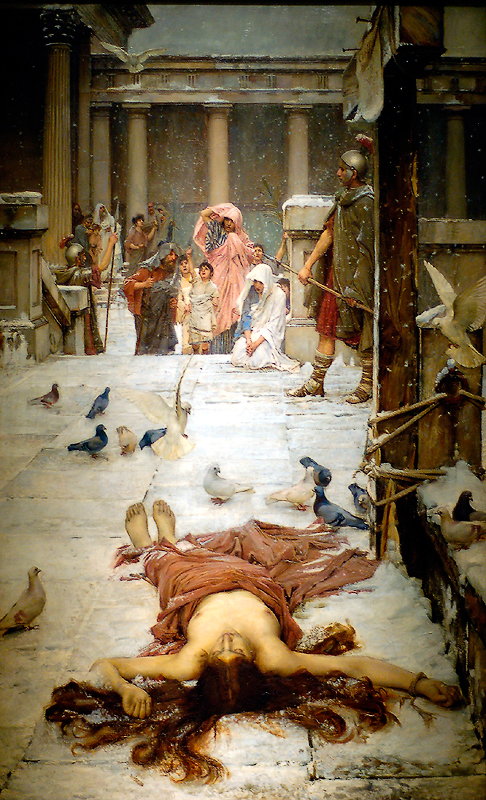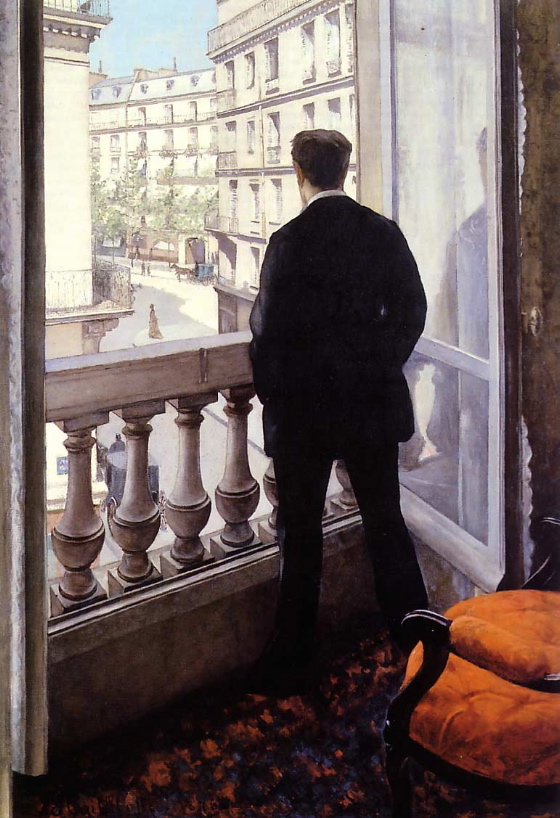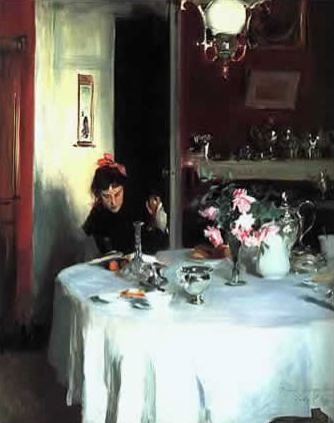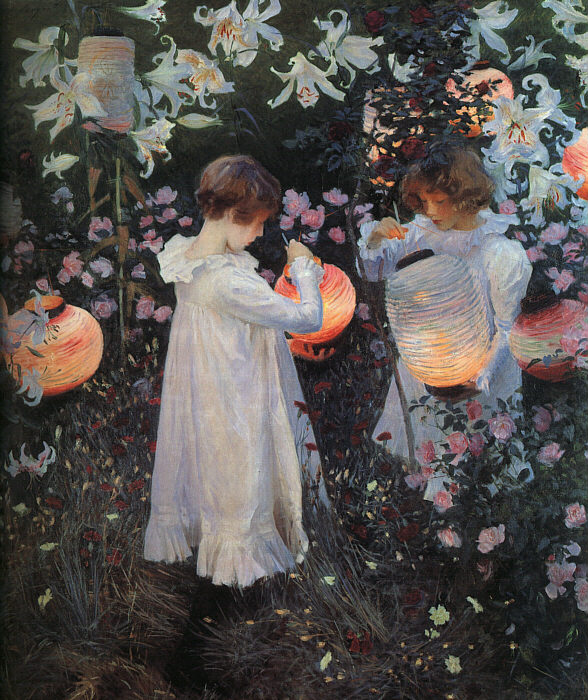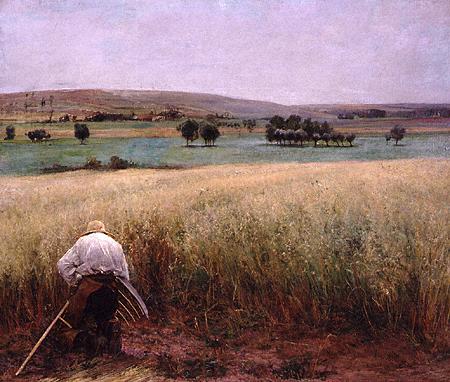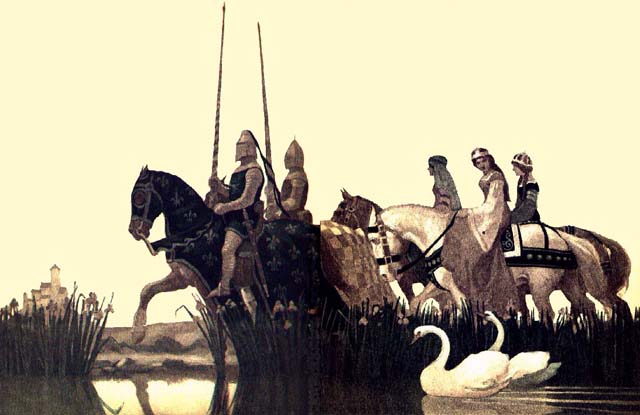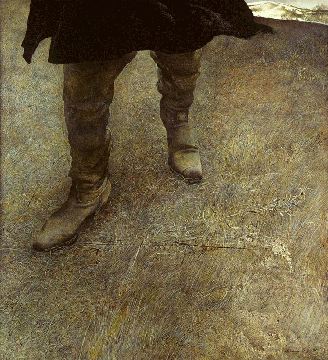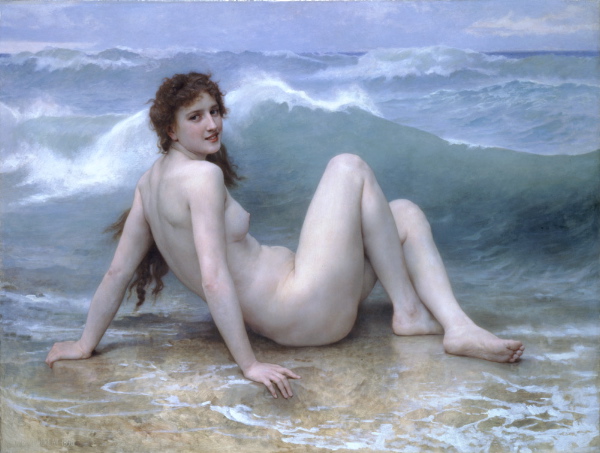
One objection commonly made to Victorian academic art is that it’s too “photographic” — that it tried for a kind of photorealism which the camera had made redundant.
I think this objection is misguided on two counts. The first is that
the “photorealism” of the Victorian academics far exceeded the capacities
of the 19th-Century camera. The academic painter could achieve color
effects which film stocks wouldn’t be able to record until late in the 20th
Century. The Victorian academics could also capture motion in ways the
still camera could not until the early 20th-Century, with the advent of
faster film stocks and shutter speeds. The Victorian realist painter
was in fact developing his aesthetic in precisely those areas where the
cameras of the time were deficient.
More importantly, photorealism is not an aesthetic fault. Painters
since the Renaissance have often striven for hyper-realistic effects,
and have sometimes used proto-photographic technologies, like the camera obscura, to that end. The fact that Van Eyck and Vermeer might possibly have used the camera obscura as an aid in draftsmanship is surely not in itself a fault in their methods. And many artists now seen as post-academic, like Degas, used the camera itself as an aid to composition, and the photorealistic aspect of their work constitutes a strong element of its appeal.
The Victorian academic painter, however, was doing something new in the
wake of the invention and widespread popularity of photography — he
was conducting a conscious dialogue with the camera. He was
incorporating a new standard of visual authority introduced by the
camera, and doing it on purpose. He knew that the experience of
viewing photographs had introduced a new relationship to visual reality
in the mind of modern man. The Victorian realist painter didn’t try to
ape the photograph, and he could exceed its resources in many areas,
but he always paid homage to its authority — and he tried to construct
a new visual aesthetic based on that authority.
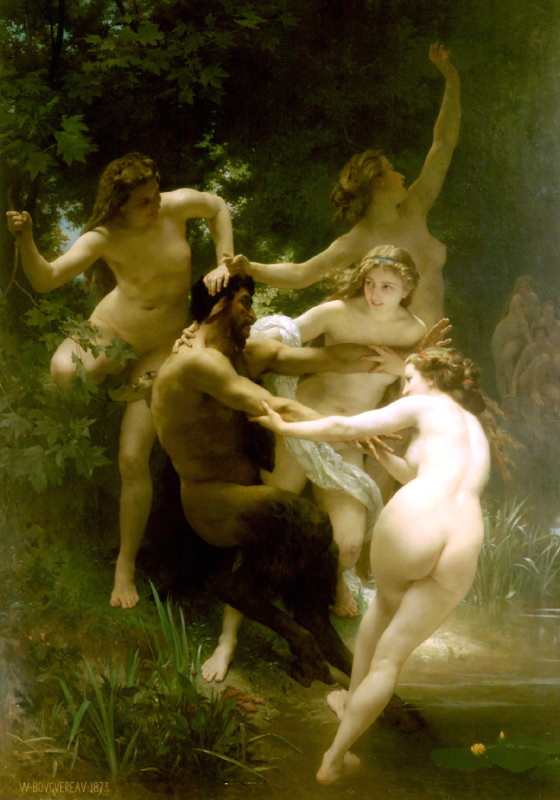
His effort in that regard was the basis for the magic of Victorian
academic art, for it popularity at the time and for its enduring
appeal. Apologists for the Victorian painters often try to downplay
this aspect of the academic style, try to reconnect them to the art
that had gone before them in an unbroken tradition. But they were
radical — the photograph made them radical.
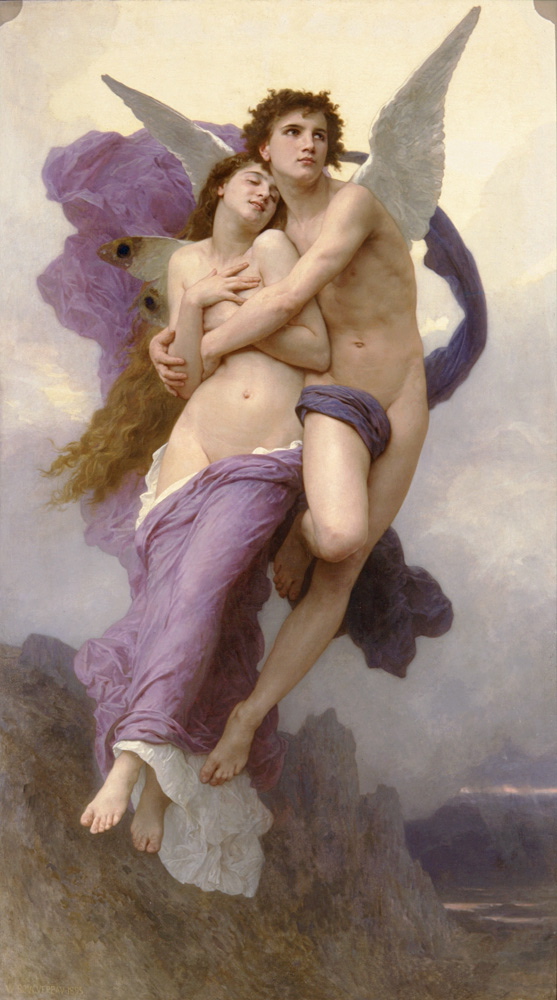
So Bouguereau wanted to show us nymphs and satyrs, wanted to show us
figures floating in mid air, but wanted us to receive the visions as
having the authority of photographs — and not just the photographs
that an actual camera of the time could make but ideal photographs,
recording the subtlest effects of light, capturing the most fleeting
nuances of gesture. He wanted to make us feel that we were
looking at an über-photograph. (Bouguereau’s fantastical work is the best
place to start in a study of the über-photographic aesthetic, because,
unlike much Victorian academic art, it takes as its subjects things
which could not be observed or staged in real life and thus could not
be photographed. It’s therefore doing something far more complex
than imitating contemporary photographic practice. If we can
locate the über-photographic aesthetic here, we can isolate it as a
purely conceptual strategy.)
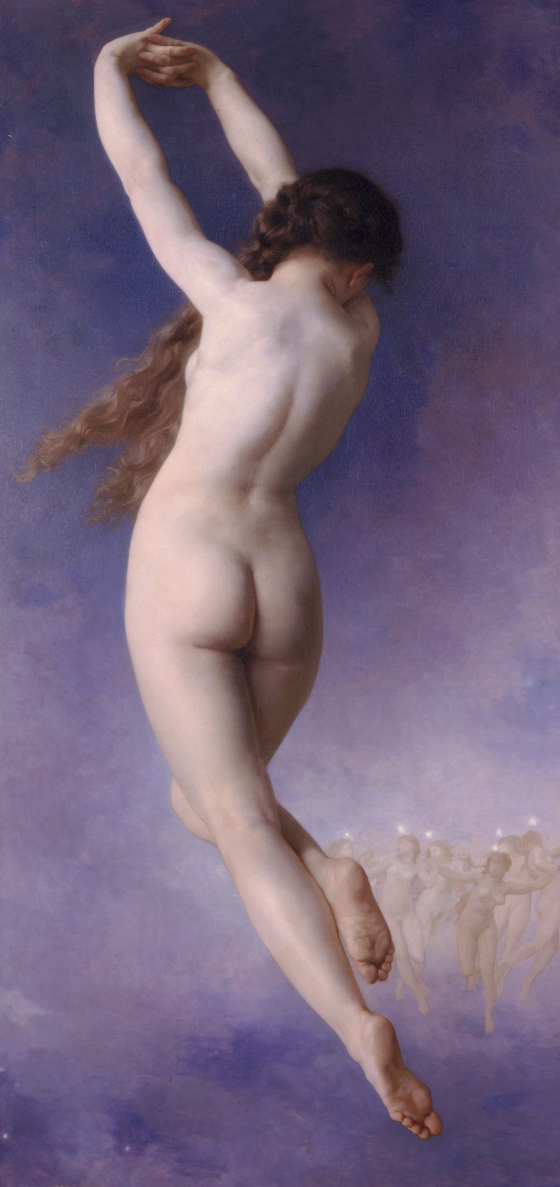
And so one has the utter strangeness of Bouguereau — decidedly
corporeal figures hovering above the ground, mythological figures with
the sex appeal of naughty photographic postcards, because they seem to
represent actual naked men and women with unimpeachable authority.
Some people find Bouguereau’s nudes pornographic, and on one level they
are. Bouguereau has used his virtuosic technique to portray these
naked men and women as though they were real people recorded by a
camera, not visions transmitted through an artistic sensibility. They
have that hint of indecency, of violation, that always attaches in some
measure to photographs of naked people.
This is not something to object to — it’s what makes Bouguereau cool,
exciting, new, radical. It’s why his paintings are still alive for
people today, objects that rivet the attention, whatever judgment the
mind may be passing on them as works of art. How much more
complicated, courageous, inventive, witty was Bouguereau’s response to
the photograph than that of the modernist rebels who simply walked away from
it, turned to abstraction in defiance of the photograph’s power.
That power has not diminished over time — indeed much of our
conception of the world we live in today is determined, overdetermined,
by the photograph. Which is why on some level Bouguereau speaks to us
more deeply than the abstractionists do. Bouguereau draws us
into that same dialogue with the photograph that he himself conducted,
and in transcending its power — by seeming to carry it farther than it
can ever actually go, even in the age of Photoshop — he places it in a truer
perspective than the modernists could ever have conceived.
A distinguished museum director has observed how difficult it is to
hang Bouguereau in a modern museum — discerning a disconnect not only
between Bouguereau and 20th-Century modernism but also between
Bouguereau and the great high-art tradition his work seems to
inhabit. That is precisely because Bouguereau’s work strove for a
transcendent synthesis of painting and photography — something
no art before him could have done and no institutionally-sanctioned art
after him has chosen to do. His work is thus profoundly modern, more genuinely modern in some ways than the work of the 20th-Century abstractionists. It may be, in fact, that Bouguereau is so modern, so radical, that for some time to come he will need a room all to himself.
[I think the concept of the über-photograph is a useful way of distinguishing the style of the early pre-Raphaelites from the mainstream of Victorian academic art that emerged after them. Rossetti had a fundamentally painterly aesthetic with a strong bent towards the stylized and decorative, a bent developed most conspicuously in the work of William Morris. The academic painters of the second half of the 19th-Century departed from both in adopting a photo-authoritative strategy, however fanciful their subjects. Burne-Jones was a key transitional figure in this process. Though he held onto many of the painterly and decorative elements of Rossetti’s style one begins to see in his work a shift towards the photo-realistic — mainly in his strict stereometric modeling of forms and figures, which gave his paintings a sculptural quality. It was the quality of relief-sculpture, however — he rarely pursued the bold evocations of deep space that so preoccupied Alma-Tadema, Lord Leighton, Tissot and Waterhouse, to take a few examples. Their strategies with regard to spatial illusion were closely connected to the über-photographic aesthetic. By the same token, the idea of the über-photograph can be used to distinguish the project of Victorian academic painters from the sterile photo-realism of some modern painters, who are consciously evoking and aping the photograph and not trying to transcend its limitations, not trying for a new visual synthesis.]
